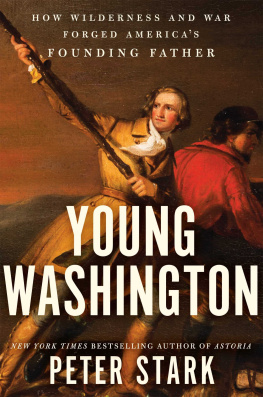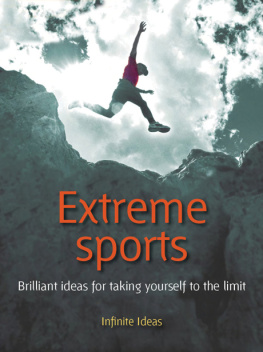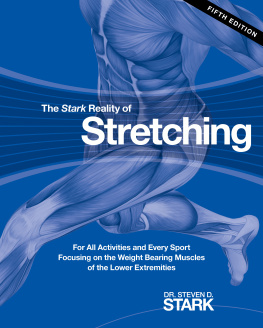
ACKNOWLEDGMENTS
T he generosity, patience, expertise, and insight of dozens of individuals both inside and outside the medical field allowed me to write this book. With very few exceptions, everyone I contacted for help gave unstintingly of their time and knowledge; this generosity of spirit came as a great encouragement to me throughout the process of researching and writing.
Id like to start by thanking Doug Webber, M.D., physician specializing in emergency medicine at St. Patricks Hospital in Missoula, Montana. A climber, kayaker, scuba diver, and marathoner as well as a doctor on the front lines of the medical field, Doug guided me through many knotty questions of physiology and emergency treatment in addition to lending his outdoors expertise. I would like to thank for his psychological insights Scott Elrod, M.D., also of Missoula. I received help for many of the chapters by attending the 16th Annual Wilderness Medicine gathering in Keystone, Colorado, sponsored by the Office of Continuing Medical Education at the University of California, San Diego, School of Medicine. It was a tremendous resource to have so many experts assembled in one place, and I welcomed the opportunity to attend as a layman. Below I thank the individual physicians from the conference along with others who helped with various chapters. I have tried to render as accurately as possible what Ive learned from them; I apologize to them for any lapses.
For the hypothermia chapter, which originally appeared as an article for Outside magazine in 1997, I had the advice of several experts on hypothermia, including Daniel Danzl, M.D.; Robert Pozos, M.D.; William Forgey, M.D.; and Cameron Bangs, M.D. Tom Bulger, M.D., also an emergency physician at St. Patricks Hospital, helped me with details of medical procedure, and Paul Ryan of Pipestone Mountaineering, Missoula, Montana, added his expertise with outdoor equipment. Patrick Gallagher related his own harrowing encounter with hypothermia. Outdoor guide and skiing companion Skip Horner, of Skip Horner Worldwide, gave graphic details of what its like to sleep in a tent at 48 degrees in Antarctica.
For the drowning chapter, I received help from Jerome Modell, M.D., of the University of Florida, a nationally known expert on drowning and near-drowning. Kayak instructor Kurt Doettger gave an account of his experience of near-drowning during a whitewater rescue operation in North Carolina. John Anderson and John Cox of The Trailhead outdoors store in Missoula, Montana, provided details of kayaking equipment, and Richard Gallun and Mark Wheelis lent their whitewater expertise. Jeff France of Board of Missoula described his experiences as a kayaker who has recirculated in large whitewater holes and dropped over waterfalls.
The mountain sickness chapter benefited greatly from the expertise of Peter Hackett, M.D., one of the participants in the wilderness-medicine conference and a leading researcher on the physiological effects of altitude. Also at the conference, Clifford Zwillich, M.D., gave a helpful lecture on sleep apnea at high altitude, and Rob Roach, Ph.D., lectured on the physiology of women at high altitude. A former next-door neighbor of mine and backcountry ski partner who has gone on to become one of the Himalayas most accomplished climbers and guides, Daniel Mazur of Himalaya Incorporated, provided many details of high-altitude climbing and its physiological effects, usually via e-mail from Tibet, Nepal, or Pakistan. Delbert Kilgore, avian physiologist at the University of Montana, helped with the physiology of birds that breathe at high altitude. Noel Ragsdale gave valuable insights on details of character, and climber Chris Brick described her own case of pulmonary edema while climbing in the Andes.
The neurofeedback descriptions and brain wave research that are included in the avalanche chapter would not have been possible without the generous assistance of freelance writer Jim Robbins of Helena, Montana, author of A Symphony in the Brain: The Evolution of the New Brain Wave Biofeedback, and Bernadette Pedersen, also of Helena, and her business, Brainworks Neurofeedback Services. Bernadette kindly hooked me up to a machine that read my brain waves and allowed me to try the fascinating practice of neurofeedback as I nudged my brain waves down a kind of video highway. Les Fehmi and Susan Shor-Fehmi gave their neurofeedback expertise. Scott Lewis shared his incredible story of being buried for twenty-seven minutes several feet deep in an avalanche while heli-skiing in British Columbia (he handled it much more calmly than the character described here), and Linda Parker told of her brush with an avalanche. Physical therapist Fred Lerch gave me insights on the interaction between mind and body. Beau Johnson of Board of Missoula helped with snowboarding details, and the National Weather Service office in Salt Lake City filled me in on why it snows so much in the Wasatch Mountains. Neil Beidleman, climber, engineer with Big Air Design, and lecturer at the wilderness-medicine conference, demonstrated the Black Diamond vest designed for breathing in an avalanche. For an understanding of the physiology of avalanche victims, I am grateful to Colin K. Grissom, M.D., and Martin I. Radwin, M.D., who with their colleagues have been conducting fascinating research in the mountains of Utah by burying volunteers under the snow to simulate an avalanche and monitoring their physiology.
For the scurvy chapter, sailing companion and all-around outdoor expert Tom Duffield provided nautical accuracy about boats and the waters of Puget Sound.
For the heatstroke chapter, bicycle racer Charlie Holbrook gave an insightful account of a racers strategy and vivid description of the strain on a racers body when hill climbing, while Len LaBuff, owner of Open Road bicycles in Missoula, provided details of equipment. Peter Felsch, meteorologist with the National Weather Service in Missoula, and Bryan McAvoy, meteorologist with the National Weather Service in Greenville, South Carolina, helped with setting a realistic weather scenario for the chapter. P. Z. Pearce, M.D., a speaker at the wilderness-medicine conference, presented a useful lecture on heat illness.
I heard detailed, thoughtful descriptions of their long falls for the falling chapter from Otto Plattner, of Innsbruck, Austria, who tumbled far down a couloir in the Tyrolean Alps and lay in the snow for hours waiting for a rescue, and Bill Watson of Missoula, who survived, unhurt, a fall from the fourth floor of a building under construction. Climber Jack Tuholske and Susan Duffield suggested mountaineering and climbing literature for me to read, and Ann DiCesare, librarian at Readers Digest, managed with amazing speed to locate the account of the tailgunner falling out of the airplane that I remembered having read in my youth, as well as the article about the Swedish hunter buried for eight days in an avalanche. For technical details of rock climbing, I am grateful to J. R. Plate of Pipestone Mountaineering and to Doug Webber, M.D., for a realistic climbing and trauma scenario. Ebo Uchimoto, professor of physics at the University of Montana, helped with the physics and calculations in the chapter, as did Jennifer Fowler, lab technician in the department. Chuck Leonard of the University of Montanas Department of Physical Therapy clarified some of the motor movements, and Charles Vogel helped with the characters financial background.
The predators chapter and description of the physiology of a box jellyfish sting benefited from the knowledge of Paul Cullen, M.D., emergency physician at Cairns Base Hospital in Cairns, Australia. The fascinating statistics on worldwide and North American land animal attacks were given in a lecture at the wilderness-medicine conference by Michael Callahan, M.D., medical director of rescue medicine at the University of Colorado, Health Sciences. Missoula writer Connie Poten, a former resident of Cairns, provided details of setting, and Nici Holt and Andy Cline told the riveting story of their excruciating entanglement with a swarm of stinging jellyfish while sea kayaking off Hawaii.
Next page









